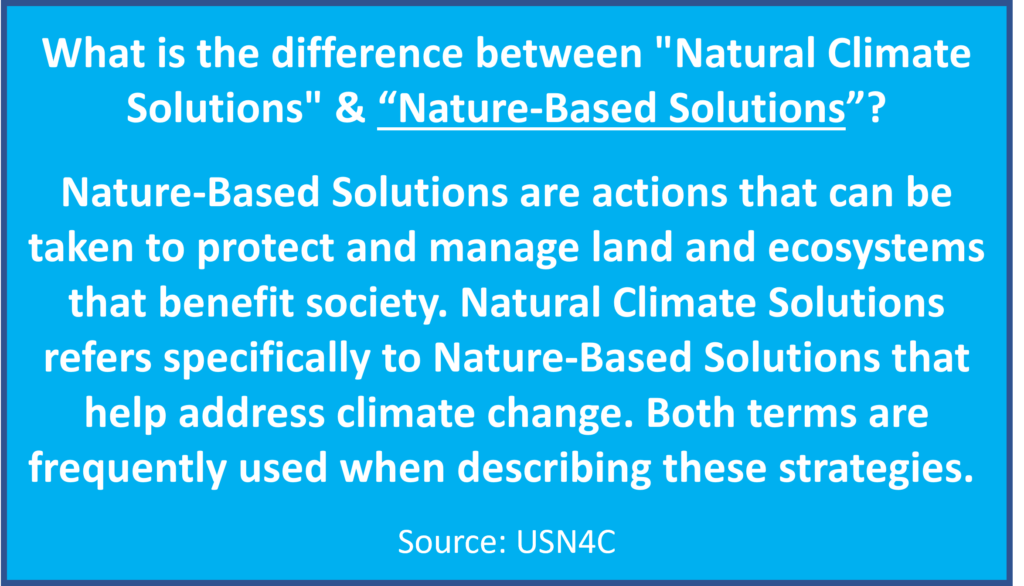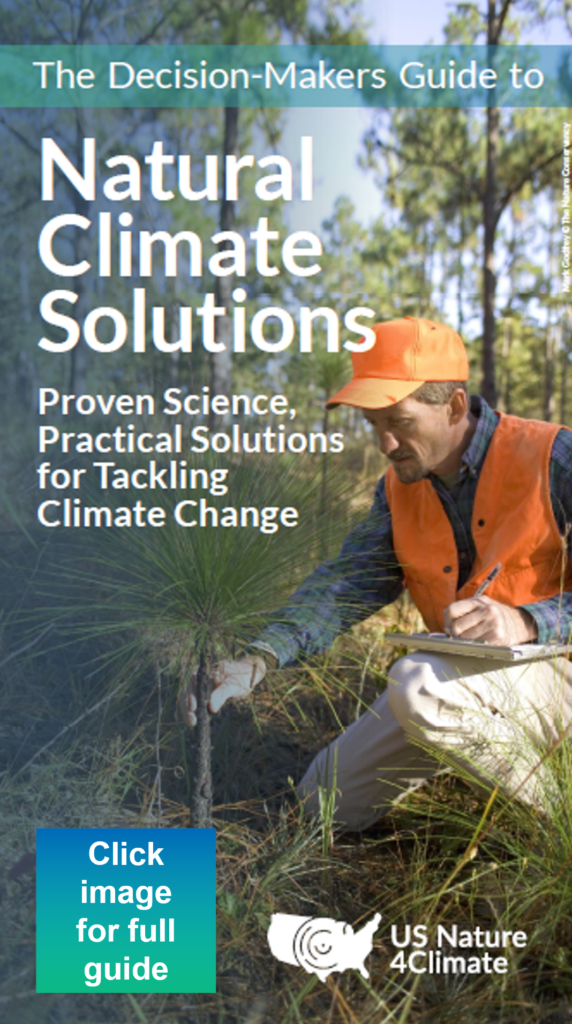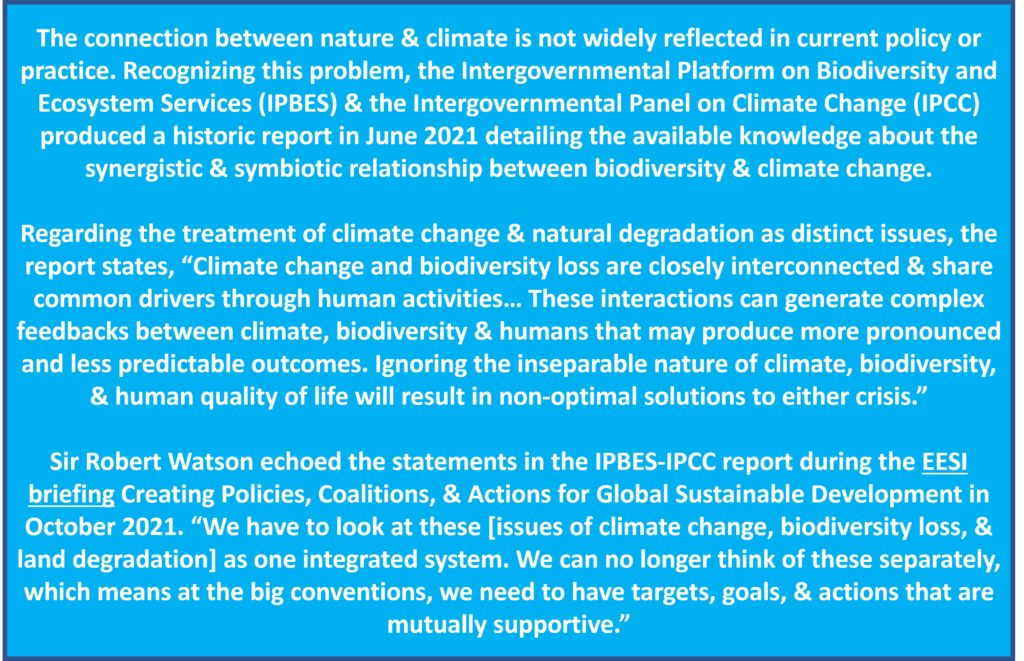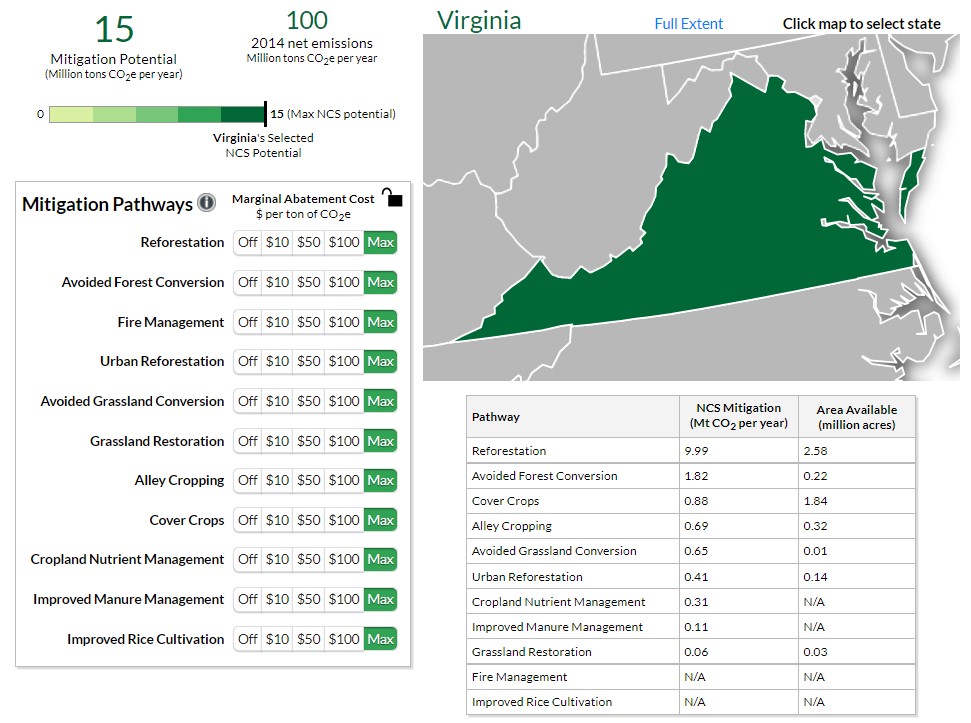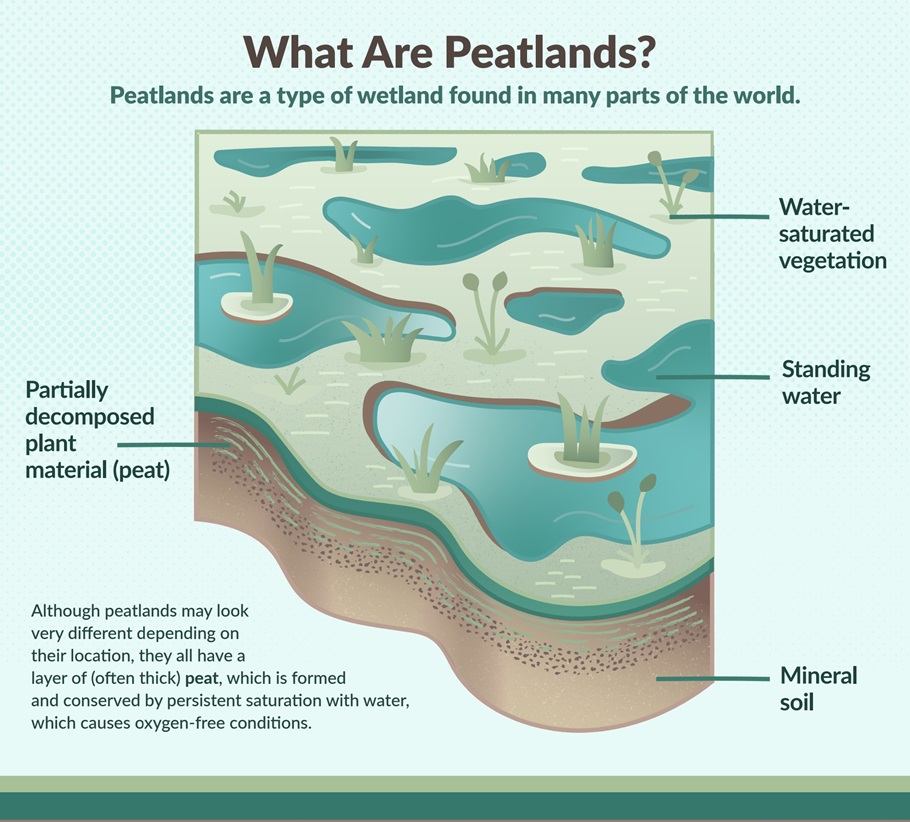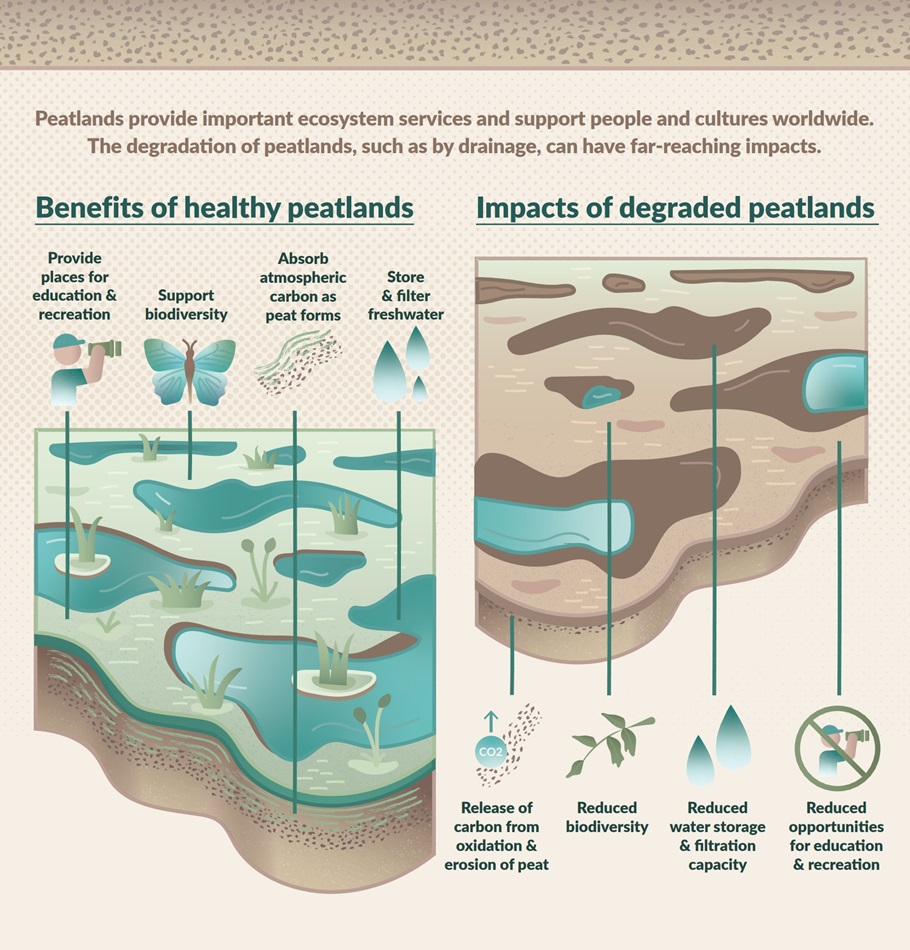On its first day in office, the Biden-Harris Administration established a national goal of reaching net-zero greenhouse gas (GHG) emissions by 2050, with a 2030 milestone of reducing emissions by 50-52 percent below 2005 levels. Achieving these goals will require widespread efforts, first and foremost harnessing the power of nature itself.
Climate measures that harness the power of nature are known as “natural climate solutions.” They include land management, conservation, and restoration practices—particularly of forests, farms, ranches, grasslands and coastal wetlands—that provide climate change mitigation benefits, typically with additional benefits for the environment, the economy, and society.
Natural climate solutions receive miniscule investment considering their potential for climate change mitigation. According to The Nature Conservancy, natural climate solutions can provide up to one-third of the emission reductions needed by 2030 that would allow global temperature increases to remain below 1.5 degrees Celsius as laid out in the Paris Agreement. In February 2022, the Bipartisan Policy Center published a report which urges Congress to massively increase Department of Agriculture funding (“up to a doubling of current budgets”) for key programs to bolster natural climate solutions.
U.S. Nature4Climate (USN4C), a non-profit and non-partisan coalition of conservation, environmental, and sustainable business organizations, recently unveiled their “Decision-Makers Guide to Natural Climate Solutions” to address the disconnect between the limited funding going towards natural climate solutions and their vast potential impact. The Guide is designed to ensure a clear path forward for the effective planning and implementation of natural climate solutions nationwide.
According to Nathan Henry, program manager at USN4C, “We identified the need for the Decision-Makers Guide last year out of a recognition that there are many individuals in government, business, and academia who are strongly committed to solving the climate crisis, but who are either unfamiliar with Natural Climate Solutions, or don’t have time to navigate the vast amount of information highlighting their benefits and the actions necessary to support their implementation.”
The Guide was launched on February 28 of this year—the same day that the U.N. Intergovernmental Panel on Climate Change (IPCC) released a major report on the vulnerability of human societies and natural ecosystems to climate change and on possible adaptation measures. USN4C’s Decision-Makers Guide is a fitting companion to the IPCC report, which also highlights the powerful impact that healthy natural habitats can have in addressing the climate crisis, but focuses on the benefits for adaptation rather than mitigation.
Henry stated that “while we tend to lead with the climate mitigation potential of these strategies, part of the appeal of Natural Climate Solutions is the crucial role they can play in solving a wide array of additional problems.” Natural climate solutions often produce additional outcomes that are distinctly positive, especially for climate adaptation and resilience. “For example, coastal restoration activities not only sequester carbon, but also protect biodiversity and improve the resilience of coastal communities to flooding,” explained Henry. “Regenerative agriculture practices store carbon, but also increase land productivity and help make soils more resilient to drought and floods. Efforts to increase urban tree cover not only sequester carbon, but also help provide communities with relief from extreme heat.”
USN4C is dedicated to making sure that natural systems and working lands are incorporated as much as possible into climate policy and action plans and has been encouraged by some of the policies and programs that have been established since the coalition was launched in 2020. “Over the past few years, federal and state governments have really begun to step up efforts to support implementation of Natural Climate Solutions, through passage of the infrastructure bill and programs like the Partnership for Climate Smart Commodities,” said Henry. Even with this recent progress, however, much more is urgently needed. That is where the Guide comes in.
Individuals from institutions of all types, including governmental, corporate, agricultural, academic, or non-profit, can use the guide to identify their role in advancing more widespread adoption of natural climate solutions. For those in need of background information about the science of natural climate solutions and the ample benefits they deliver, the guide has a section titled “Science for Decision-Makers” that covers strategies for forests, agriculture, and blue carbon (or aquatic ecosystems). On this page, USN4C has compiled an extensive selection of resources from respected organizations—peer-reviewed studies are paired with various articles, infographics, and videos that make the research more approachable for non-experts. There is also a glossary to provide key terminology and distinguish between terms that might be incorrectly regarded as synonymous, such as “climate-smart agriculture” versus “regenerative agriculture.”
Once users are equipped with the baseline knowledge they need, they can move on to the “Natural Climate Solutions Toolbox” for a more tailored analysis of the optimal strategies for various landscapes and regions. This section contains a curated list of free and publicly available tools—many of them generated by members of USN4C—including interactive features and strategic data sets designed to help decision-makers pinpoint the natural climate solutions best for them and their communities.
For example, the “U.S. Natural Climate Solutions Mapper” allows the user to quantify the maximum carbon mitigation potential of 11 different “pathways” (such as reforestation or grassland restoration) in their state based on various price points. Another feature of the mapper shows how states rank by climate change mitigation potential and contribution relative to the U.S. national level. The top five states with the highest overall mitigation potential are Texas, Iowa, South Dakota, Kansas, and Missouri. This tool is an ideal starting point for those seeking guidance on the most impactful and cost-effective natural climate solutions for their state.
More research is needed to fully understand the climate mitigation potential of certain types of natural climate solutions like fire management and no-till agriculture. “We recognize that the science behind some Natural Climate Solutions strategies is still evolving, so we provided a forum for people to hear diverse perspectives,” said Henry. This forum can be found in the “Discussion and Debate” section of the Decision-Makers Guide.
The Guide is designed to continue growing at the same pace as the emerging science. Henry explained, “This resource is not meant to be read like a book that is only read once. We plan to manage the guide as a living resource that will evolve over time—as new tools, new science, and innovation on Natural Climate Solutions progress.”
EESI is part of the USN4C Coalition. This article was originally published on EESI’s website on July 21, 2022.

